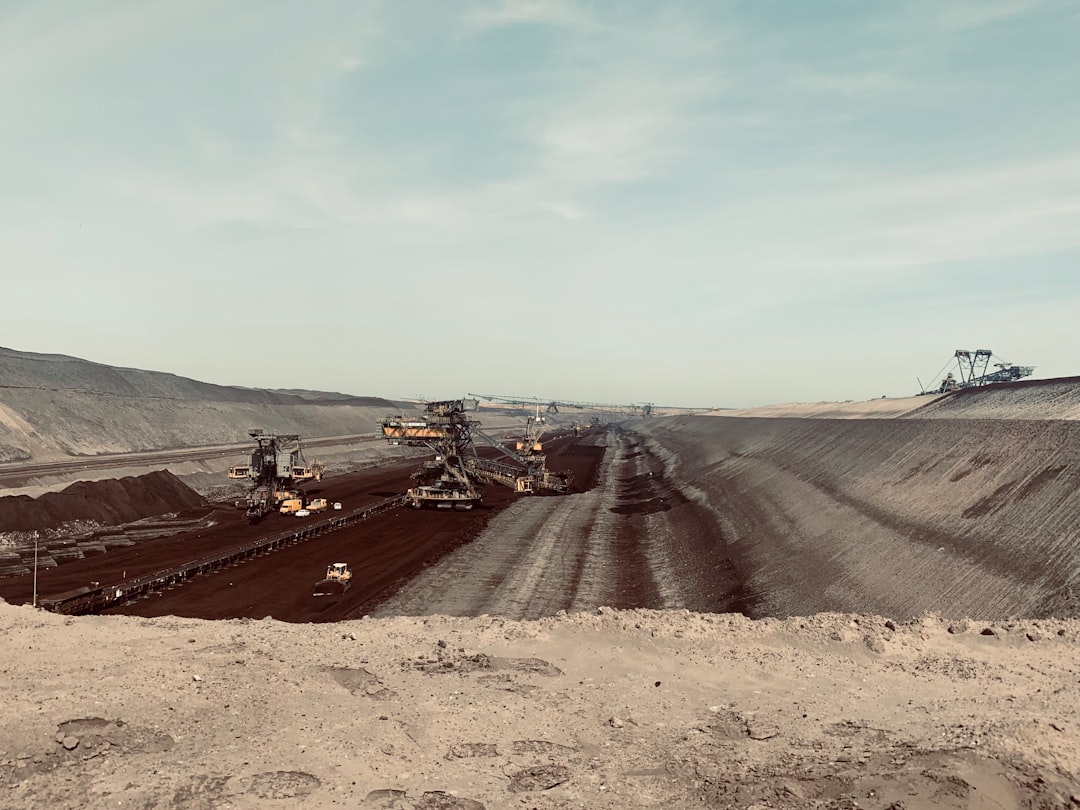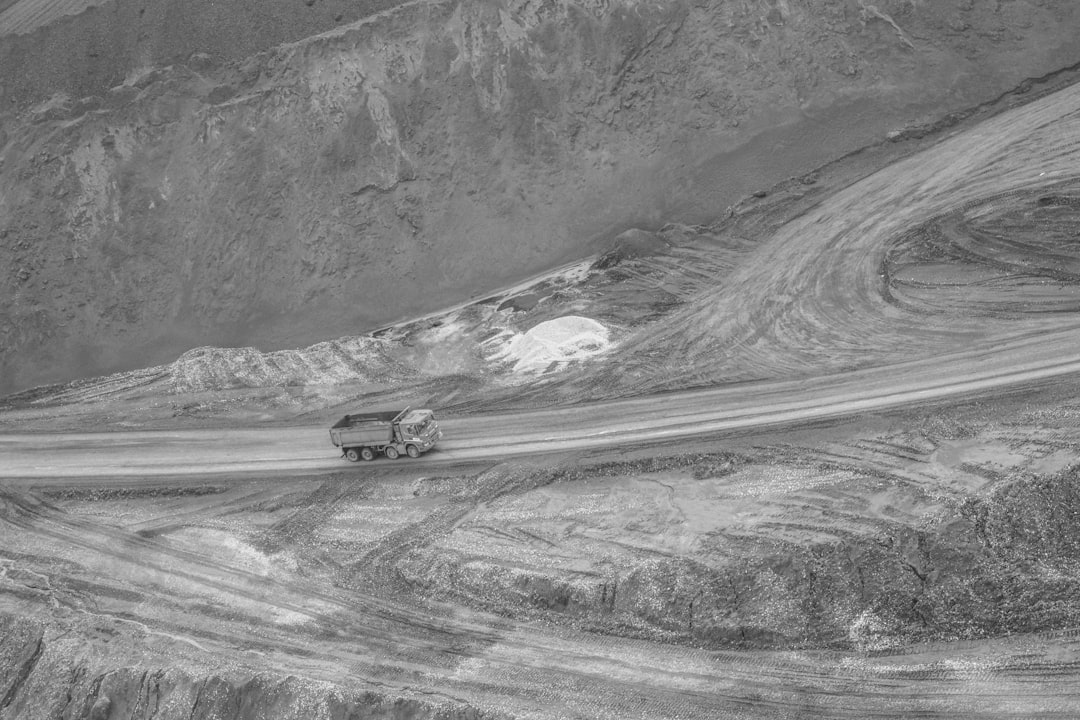Rare Earth Minerals Changing Latin America Migration Landscape
Rare Earth Minerals Changing Latin America Migration Landscape - Local Employment and Shifting Residence Patterns
The expansion of rare earth mineral activities across Latin America is notably influencing where people live and the kinds of jobs available in mining regions. As sites develop, they tend to draw workers, leading to population shifts in specific areas. This influx can alter the makeup of local communities and put pressure on existing infrastructure and services. While reflecting the increasing global interest in these critical materials, this dynamic also brings into focus the complex challenge of pursuing economic gains from resource extraction while managing the social and environmental consequences on the ground. Local governance bodies are actively trying to understand and respond to these changing conditions, attempting to manage both the potential advantages and the significant stresses accompanying rapid industrial expansion in their jurisdictions. The way these local job markets evolve and residence patterns rearrange will undeniably be a key factor in shaping the long-term prospects for communities living near these developments in Latin America.
Delving into the on-the-ground realities where rare earth extraction unfolds in Latin America reveals complex dynamics concerning the people who live and work there. Based on observations and reports up to mid-2025, several notable patterns emerge:
1. The specific technical demands of modern rare earth processing and mine management frequently necessitate expertise that isn't readily available in nearby communities. This imbalance results in a significant inflow of personnel, often recruited from national urban centers or even brought in internationally, fundamentally altering the demographic composition and skill profile of once predominantly rural or agricultural locales.
2. The sudden increase in population linked to mining activity often triggers rapid, sometimes disorganized, residential development proximal to operational sites. These nascent settlements can differ starkly from established, historical villages in the region, frequently lacking adequate foundational infrastructure like sanitation, water systems, and planned roads, essentially creating parallel, underserved communities.
3. While mining operations are sources of relatively higher-wage employment, this influx can paradoxically strain the local economy for long-term residents. The increased purchasing power drives up costs for essential goods and particularly housing, potentially pricing out individuals reliant on traditional, non-mining sector incomes and contributing to subtle forms of displacement for long-standing community members.
4. Many mining projects rely heavily on "fly-in/fly-out" labor models, where a substantial portion of the workforce resides temporarily near the mine during their shift rotations but maintains primary residence elsewhere. This pattern can limit genuine integration into the local social fabric and reduces the overall economic benefit to the host community, as a significant portion of wages earned is spent away from the point of extraction.
5. The long-term viability of the new residential footprints and population structures created by mining activity is directly tied to the finite operational life of the mineral resource itself. Planning for the inevitable cessation of mining is a critical but often underdeveloped aspect, leaving communities vulnerable to economic and demographic decline once the primary job source disappears.
Rare Earth Minerals Changing Latin America Migration Landscape - Community Adaptation Near Developing Mines
The increasing focus on extracting rare earth minerals in Latin America presents local populations near developing sites with complex socioenvironmental challenges, echoing a longer regional history of resource extraction. These communities often grapple with navigating the consequences of this activity, which can highlight historical patterns of extractivism and disproportionate impacts on vulnerable groups, including indigenous populations. The push for these critical materials, driven by global clean energy goals, places significant pressure on resource politics at the local level, raising crucial questions about equitable development and who ultimately benefits or bears the costs. Ensuring that mining operations contribute positively to human development and avoid perpetuating historical harms requires careful attention to genuine community involvement and addressing potential social and environmental disruptions in a just manner.
Observing the local responses where rare earth extraction is commencing or expanding across Latin America reveals a fascinating, often complex, tapestry of community-level adjustments currently being navigated as of mid-2025. While the macro-level shifts in population and labor draw attention, the subtle, ground-level adaptations within established communities facing these changes are equally significant for understanding the full picture:
1. Local populations often employ decentralized or traditional methods, sometimes augmented by basic technology, to monitor subtle environmental changes around developing mine sites. This grassroots surveillance of water bodies or dust levels serves as a crucial early warning system from the community's perspective, operating parallel to or in the absence of comprehensive corporate or state monitoring, highlighting a reliance on self-observation.
2. Established communities frequently respond to the influx of temporary workers and newcomers by actively reinforcing and publicly celebrating their unique cultural identities, traditions, or languages. This can be interpreted as a vital mechanism for maintaining social cohesion and a sense of place amidst rapidly changing demographics, a form of cultural anchoring against potential dilution or displacement.
3. New, often informal, service economies quickly emerge to cater specifically to the transient mining workforce's needs for lodging, food, transport, and retail goods. This opportunistic economic adaptation, while providing immediate income streams for some residents, raises questions about long-term sustainability and potential market distortion once the primary economic driver, the mine, eventually scales down or ceases operations.
4. As a collective adaptive measure, residents commonly form new community-based organizations or committees explicitly purposed for engaging with the incoming mining company. These groups aim to consolidate local voices, negotiate terms, raise concerns regarding impacts, and serve as a more formal interface than individual interactions allow, though their actual leverage and representative capacity can vary significantly.
5. Given the substantial water demands inherent in mineral processing, communities are often compelled to adapt their existing water access and management strategies. This can manifest in renegotiations of traditional water use rights or participation in shared infrastructure projects, reflecting a reactive adjustment to perceived or actual competition for essential local resources, placing the onus of adaptation disproportionately on the local population.
Rare Earth Minerals Changing Latin America Migration Landscape - Government Approaches to Labor and Migration
As Latin American nations increasingly navigate their roles in the global demand for rare earth minerals, the way their governments handle related labor and migration issues is becoming central. Authorities at various levels face the complex task of harnessing economic upside from mineral extraction while managing the significant potential social and labor market upheaval for communities. Current governmental and regulatory frameworks often aim to facilitate investment, including foreign capital, while ostensibly promoting opportunities for domestic workforces. Yet, these policy approaches frequently struggle to fully address the intricate realities of internal and external migration patterns and the seamless integration of diverse labor pools. The reliance on temporary or rotating workforces, sometimes brought in from elsewhere, prompts questions about the long-term economic stability of host regions and the social fabric of affected communities. Ultimately, the effectiveness of official strategies in this rapidly evolving landscape will hinge on their capacity to adapt and proactively address the consequences of expanded mineral extraction on labor dynamics and population movement.
Examining the ways governments in Latin America approach labor and migration dynamics surrounding rare earth mineral extraction reveals some notable patterns as of mid-2025. From a researcher's perspective, these approaches often appear shaped by immediate economic or operational priorities, sometimes raising questions about their long-term social implications or alignment with broader development goals for local populations.
1. It's observed that governmental policies in some instances seem designed to fast-track the availability of specific technical skills needed for advanced mineral processing or complex operational phases, potentially by streamlining processes for companies to bring in personnel from elsewhere. This focus on securing expertise rapidly can, at times, appear to take precedence over policies strictly prioritizing initial recruitment from the existing local labor pool surrounding the mine site.
2. There's an emerging trend where distinct legal or administrative procedures are being established or adapted to handle disputes arising from mining operations, including those related to labor conditions or migration flows. These specialized pathways are often presented as mechanisms for efficiency but warrant closer examination regarding how they might influence access to conventional justice or fairness in resolving conflicts compared to standard legal processes.
3. Rather than state entities proactively developing and providing comprehensive public infrastructure like housing, water, and sanitation for the incoming transient or new resident mining workforce, the responsibility is frequently delegated to the mining companies themselves, often as conditions attached to permits or licenses. This approach can lead to variable standards of service provision and potentially less integrated, semi-planned settlements adjacent to operations.
4. Many frameworks require mining companies to invest in local community projects or training programs as part of obtaining a 'social license' to operate. While the intention is clearly to ensure some local benefit, the actual impact seems frequently dependent on the capacity and willingness of government bodies responsible for monitoring and enforcing these obligations, which appears uneven across the region, potentially leading to promised benefits not fully materializing.
5. Infrastructure planning and investment, particularly concerning transportation links like roads and regional air access, are sometimes strategically undertaken by governments specifically to facilitate the logistics of operating remote sites and managing workforce rotations, implicitly supporting 'fly-in/fly-out' labor models. This focus on operational connectivity can be seen as prioritizing the mechanics of extraction over policies that might otherwise encourage a more settled, locally integrated workforce contributing more directly to the sustained local economy.
Rare Earth Minerals Changing Latin America Migration Landscape - Infrastructure Demands and Human Flow
The expanding rare earth mineral extraction landscape in Latin America is fundamentally altering infrastructure demands and
Moving beyond the immediate community dynamics and policy frameworks, a closer engineering and logistical lens reveals some less discussed but significant infrastructure consequences directly linked to the unique demands of rare earth extraction and processing and the related shifts in human presence as of mid-2025. These points highlight how the physical requirements of this industry reshape the landscape in ways that extend far beyond the mine site itself.
The intricate chemical separation processes necessary for rare earths can demand staggering volumes of specific water qualities, often necessitating the construction of complex, large-capacity water supply systems extending significant distances or requiring novel storage solutions that fundamentally alter local and regional water availability dynamics.
Powering the energy-intensive stages of rare earth refining frequently requires infrastructure far exceeding local capacity; this can translate into the development of dedicated high-voltage transmission lines traversing new corridors or even catalyzing the need for new power generation projects whose primary purpose serves the mine site, rather than broader regional electrification needs.
Managing the substantial quantities of chemically active residues produced during rare earth processing involves designing and constructing specialized, large-scale containment facilities, particularly tailings storage facilities, which represent significant, long-term engineered landscapes requiring perpetual monitoring and management potentially long after mining operations cease.
While seemingly focused on physical extraction, the operational efficiency and automation of modern rare earth mines heavily rely on robust digital connectivity, prompting the installation of advanced telecommunications infrastructure like fiber optic networks primarily oriented towards industrial data flow and remote operations control, rather than necessarily enhancing widespread community internet access.
Even with provisions for worker housing, the presence of a large, often transient or temporary workforce introduces unpredicted or underestimated stress on pre-existing local public social infrastructure, including strain on limited healthcare facilities, educational resources, and emergency services, requiring capacity increases often not comprehensively funded or planned for by either the state or the operating company responsible for the workforce influx.
More Posts from skymineral.com:
- →AI-Powered Geology: Exploring Purnululu's Sandstone Domes for Rare Earth Minerals
- →Unlocking India's Rare Earths: Assessing the Role of AI in Sustainable Mining
- →AI Adoption and Impact in Rare Earth Prospecting
- →Machine Learning Transforms Rare Earth Exploration
- →Assessing Work-Life in Highly Automated Mining: Lessons from Goonyella for Future Rare Earth Operations
- →AI Reshapes Rare Earth Exploration Amidst Geopolitical Realities

